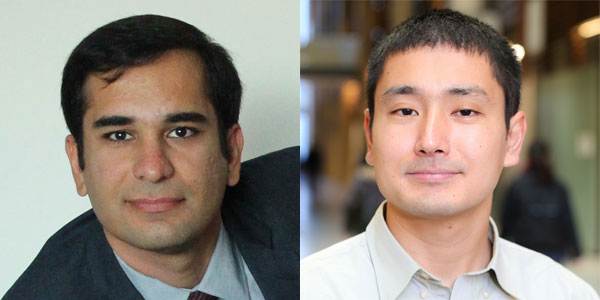
Q and A with U of T Engineering’s two newest professors
Earlier this month, U of T Engineering welcomed its two newest faculty members. They join a dynamic community, producing world-leading research in their areas of expertise while inspiring and nurturing the next generation of global engineering leaders.Professor Mason Ghafghazi (CivE) completed his PhD in geotechnical engineering at the University of British Columbia in 2011. After a term at BC Hydro, he attended the University of California Davis to do postdoctoral research on liquefaction susceptible dams in California. He specializes in liquefaction assessment, field investigation and constitutive modelling of soils.Professor Masauki Yano (UTIAS) completed his PhD in Aeronautics and Astronautics from Massachusetts Institute of Technology (MIT) in 2012 and did postdoctoral work in the group of Professor Anthony Patera in the Department of Mechanical Engineering at MIT. His research focuses on building mathematical models that support the design of new aeronautical components, from airplane landing gear to rocket engines.U of T Engineering spoke with the new professors to find out more about their research and what they’re looking forward to at U of T:
Could you explain the focus of your research?
MG: Everything on earth is sitting on either rock or soil. Soils can also be building materials for much of our infrastructure — embankment dams are one example. I come from the West Coast, and one of my main focuses is what happens to soils during earthquakes. Some soils liquefy, meaning that in a matter of seconds they transform from a strong material holding bridges and buildings to a soup that buildings and cars can sink into.
Students in my group use laboratory testing and numerical modelling to figure out what soils, under what types of earthquake loading, will liquefy and how much damage they will cause.
One thing that makes soils particularly interesting as engineering materials is that unlike steel, concrete, or carbon fibre, we do not get to choose them. We have to deal with whatever is in the ground where a project happens to be. So, part of my work is building, analyzing and improving tools — including lab testing and computational modelling — that we use in the field to characterize soils. In addition that, we build new tools and modify existing ones to measure things that were unknown before.
MY: My research focuses on the development of computational methods for problems in aerospace sciences and engineering. Specifically, I develop computational algorithms to accurately and efficiently solve partial differential equations with applications in aerodynamics and continuum mechanics. The goal is to develop computational tools that facilitate the analysis and design of the next generation of aerospace vehicles.
Why did you choose U of T?